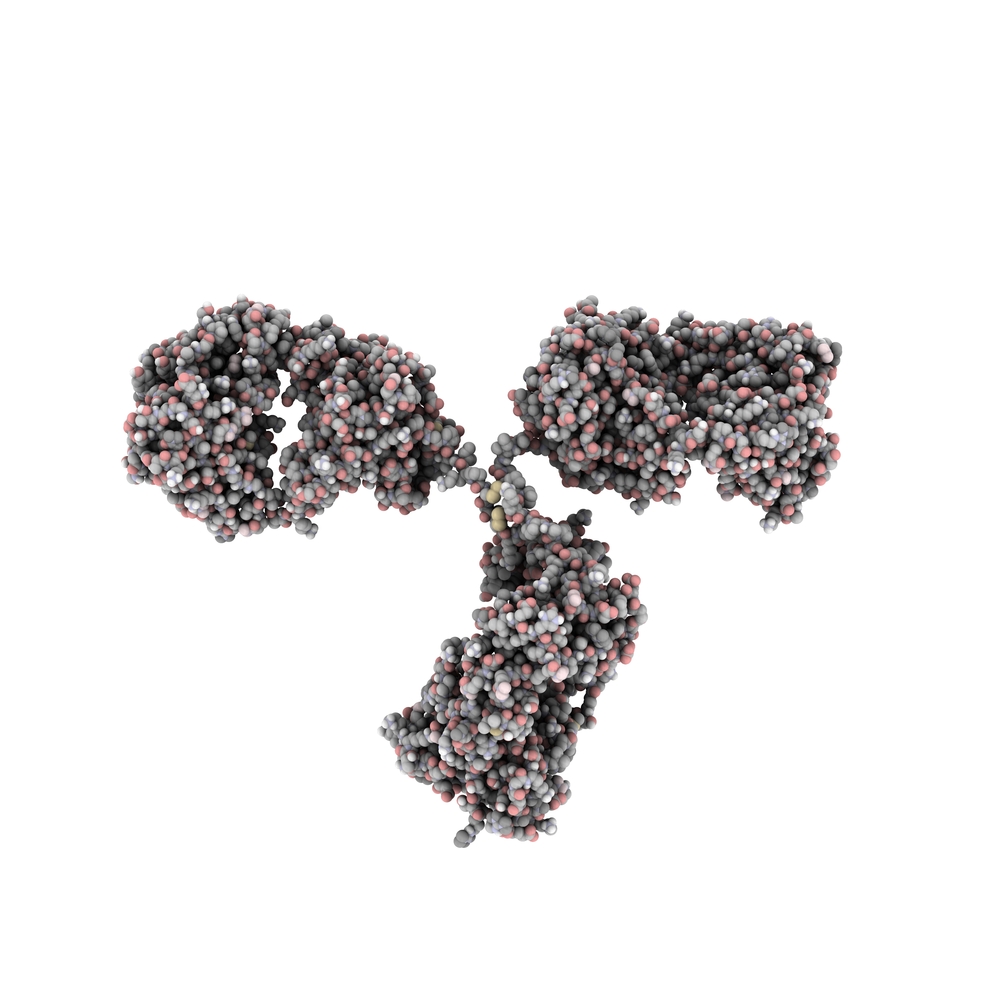MOUSE ANTI-FELINE LEUKEMIA VIRUS P27 ANTIBODY (M453)
Mouse anti Feline leukemia virus p27 antibody (M453) reacts with the p27 of FeLV (anti gag). The antibody is suitable for Western blot and enzyme immunoassay (EIA) applications (ELISA and Lateral Flow). It can be used for detection in Sandwich ELISA as a matched pair with MAB12388 as a capture antibody.
PRODUCT DETAILS – MOUSE ANTI-FELINE LEUKEMIA VIRUS P27 ANTIBODY (M453)
- Mouse anti Feline leukemia virus p27 monoclonal antibody (M453).
- Reacts with FeLV p27 (anti gag).
- Suitable for use in Western blot, ELISA and Lateral Flow applications.
- Purified by Protein G Sepharose chromatography.
- Presented in phosphate buffered saline, pH 7.2, 0.09% sodium azide.
BACKGROUND
Feline leukemia virus (FeLV) is a widespread pathogen of the domestic cat and (Cornell University, 2016) and was first described in 1964. FeLV is an RNA virus belonging to the family Retroviridae and its genome contains three genes: envelope (env) coding for the glycoprotein 70 (SU) and the transmembrane protein p15 (E) (TM); the polymerase (pol) gene coding for reverse transcriptase, protease and integrase; and the group specific antigen (gag) gene coding for the structural proteins of the virus. FeLV exists in four immunologically closely-related subtypes: A, B, C, and T. As well as the so-called exogenous FeLV, two forms of endogenous (enFeLV) gamma retroviruses are also known in the domestic cat: the endogenous feline leukaemia virus and the RD114 virus. The enFeLV are not pathogenic and not of veterinary importance (Lutz et al., 2010). FeLV assembles at the plasma membrane. The precursor of the viral structural proteins Pr65Gag is thought to attach to the underside of the membrane. Once bound, the Pr65Gag proteins multimerise, triggering the membrane to bend around the forming core. Env proteins associate with the nascent particle through their co-localisation on the membrane until an immature particle is formed. A scission event then takes place, releasing the immature virion, at which time the viral protease cleaves Pr65Gag into distinct matrix (MA), capsid (CA) and nucleocapsid (NC) proteins. As they bud from the infected cell, nascent virions acquire the envelope glycoprotein Env, comprising the surface (SU) glycoprotein gp70 and transmembrane (TM) protein p15E. Gp70 is the target for neutralising antibodies in recovered cats and is an essential component of FeLV vaccines (Willett and Hosie, 2013).
FeLV is transmitted mostly by direct contact via saliva, nasal secretions, and milk by mutual grooming or occasionally by bites. It can also be transmitted indirectly via contact with faeces from FeLV-viremic shedders. Transmission from mother to offspring also occurs occasionally. Young kittens are especially susceptible to FeLV infection while with increasing age cats become more resistant to infection. The pathogenesis of FeLV infection varies according to the host immune response. The main host outcomes following infection are complete elimination of FeLV following an effective immune response, an abortive infection from a partially effective immune response that clears the viraemia but does not prevent proviral integration (regressive infection), and persistent viraemia with proviral integration (progressive infection). Persistently FeLV viremic cats suffer from three major disease complexes, namely immune suppression, anaemia, and lymphoma. FeLV infection is usually diagnosed by the detection of the FeLV core protein p27 in the peripheral blood by double-sandwich antibody ELISA or by Immunochromatography. The presence of p27 is a marker of infection but not always of viremia as in many cats soluble p27 occurs in the absence of infectious virus (Lutz et al., 2010). The prevalence of FeLV in cats has decreased significantly in the past 25 years since the development of an effective vaccine and more accurate testing procedures (Cornell University, 2016).
REFERENCES
- Coffin JM (1979). Structure, replication, and recombination of retrovirus genomes: some unifying hypotheses. J Gen Virol 42, 1-26.
- Feline leukemia virus factsheet. Cornell University College of Veterinary Medicine, May 2016.
- Feline leukaemia virus factsheet. Small Animal Veterinary Surveillance Network (SAVSNET), University of Liverpool, September 2019.
- Lutz et al. (1980c): Quantitation of p27 in the serum of cats during natural infection with feline leukemia virus. In: Feline Leukemia Virus, Hardy WD, Essex M, McClelland A, (eds); Development in Cancer Res 4 , 497505, Elsevier/North Holland.
- Regina Hofmann-Lehmann et al. (2018). Feline Leukaemia Virus Infection. Advisory Board on Cat Diseases (ABCD).
- Willett and Hosie (2013). Feline leukaemia virus: half a century since its discovery. Vet J. 195(1):16-23.

